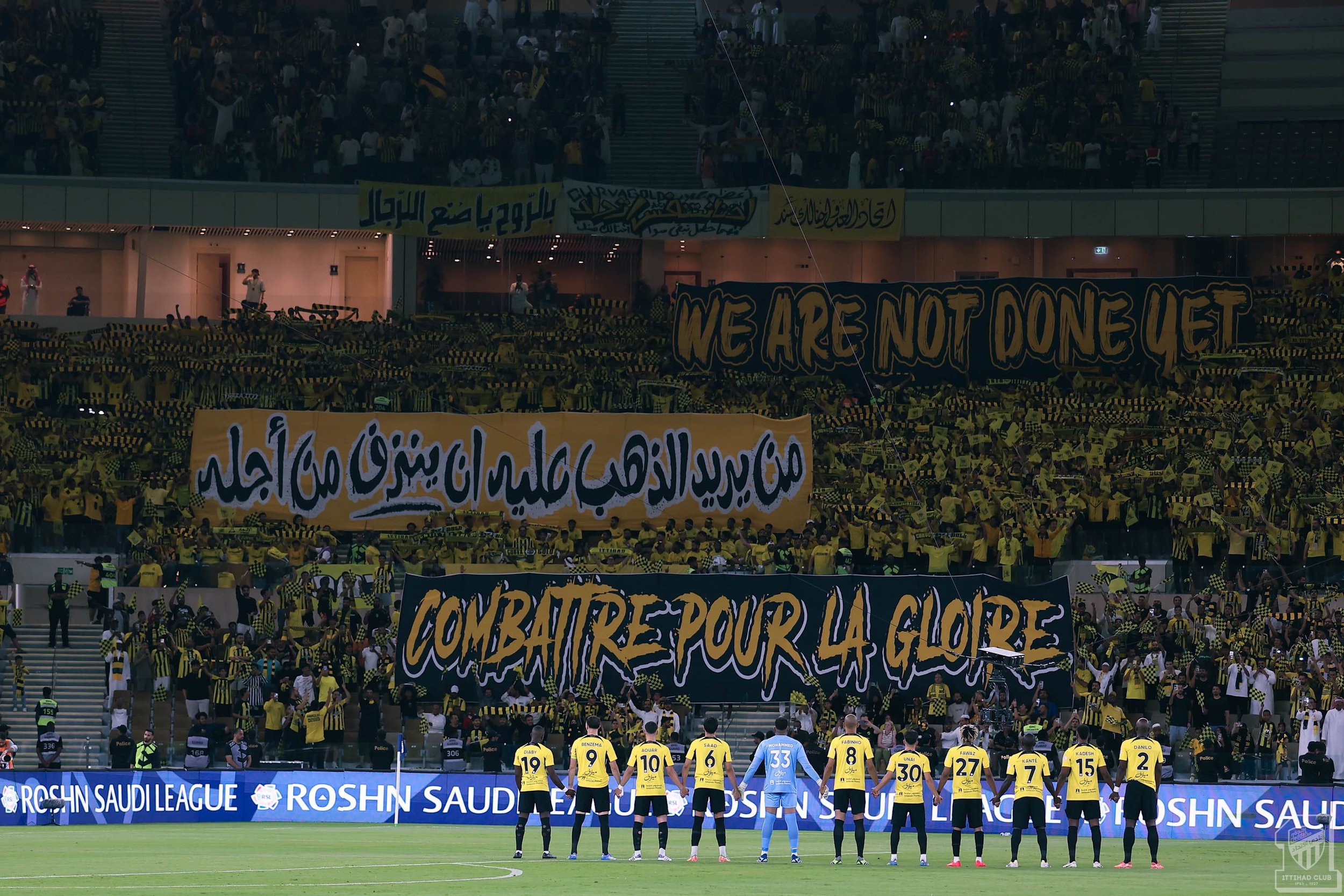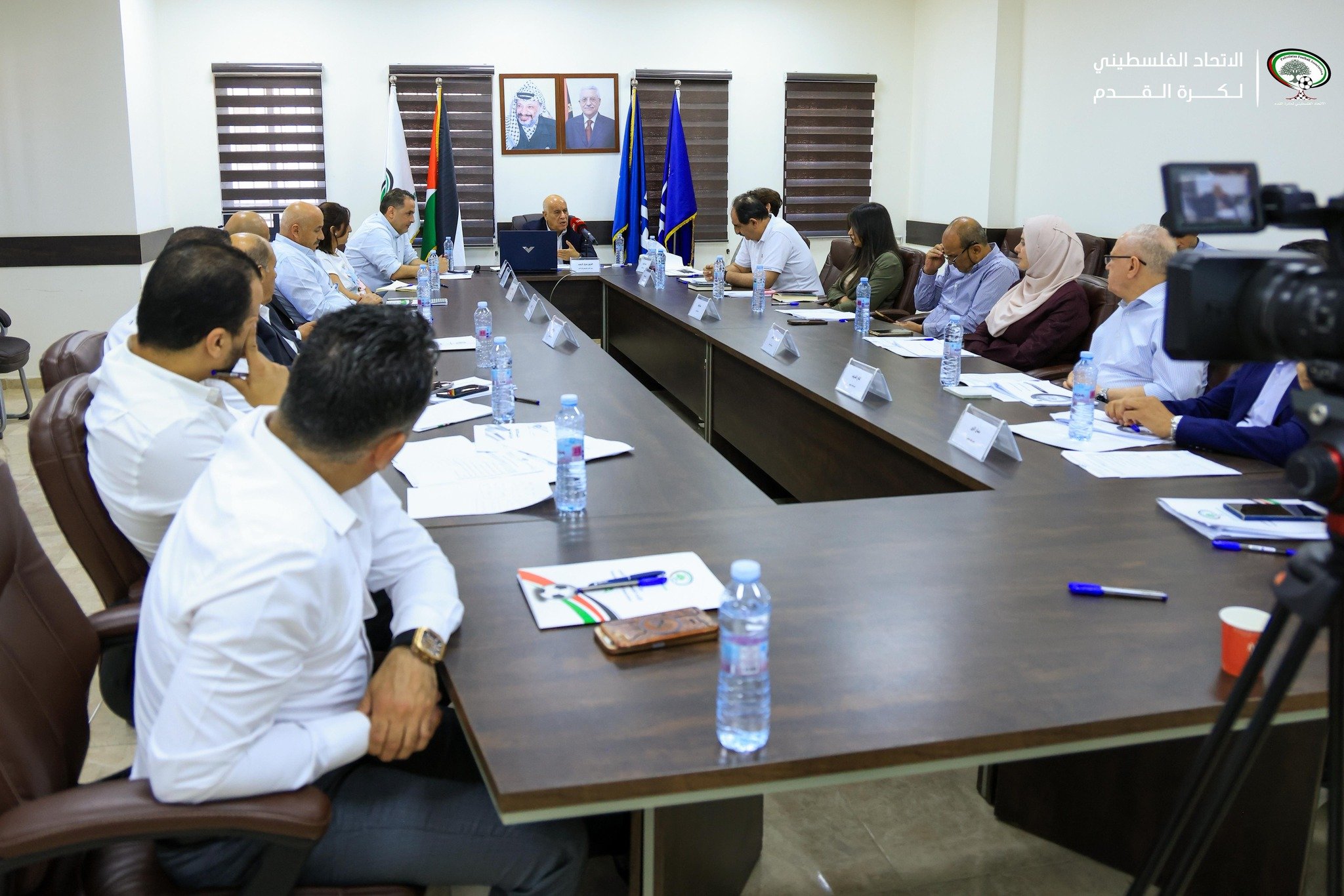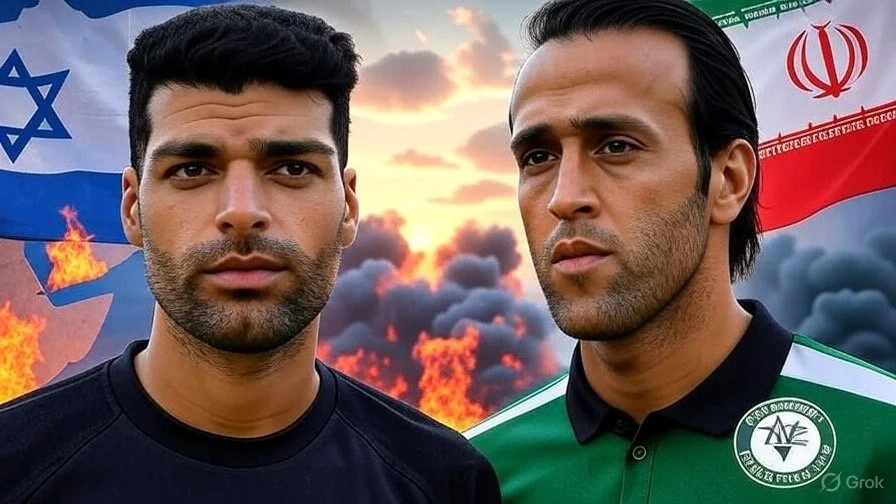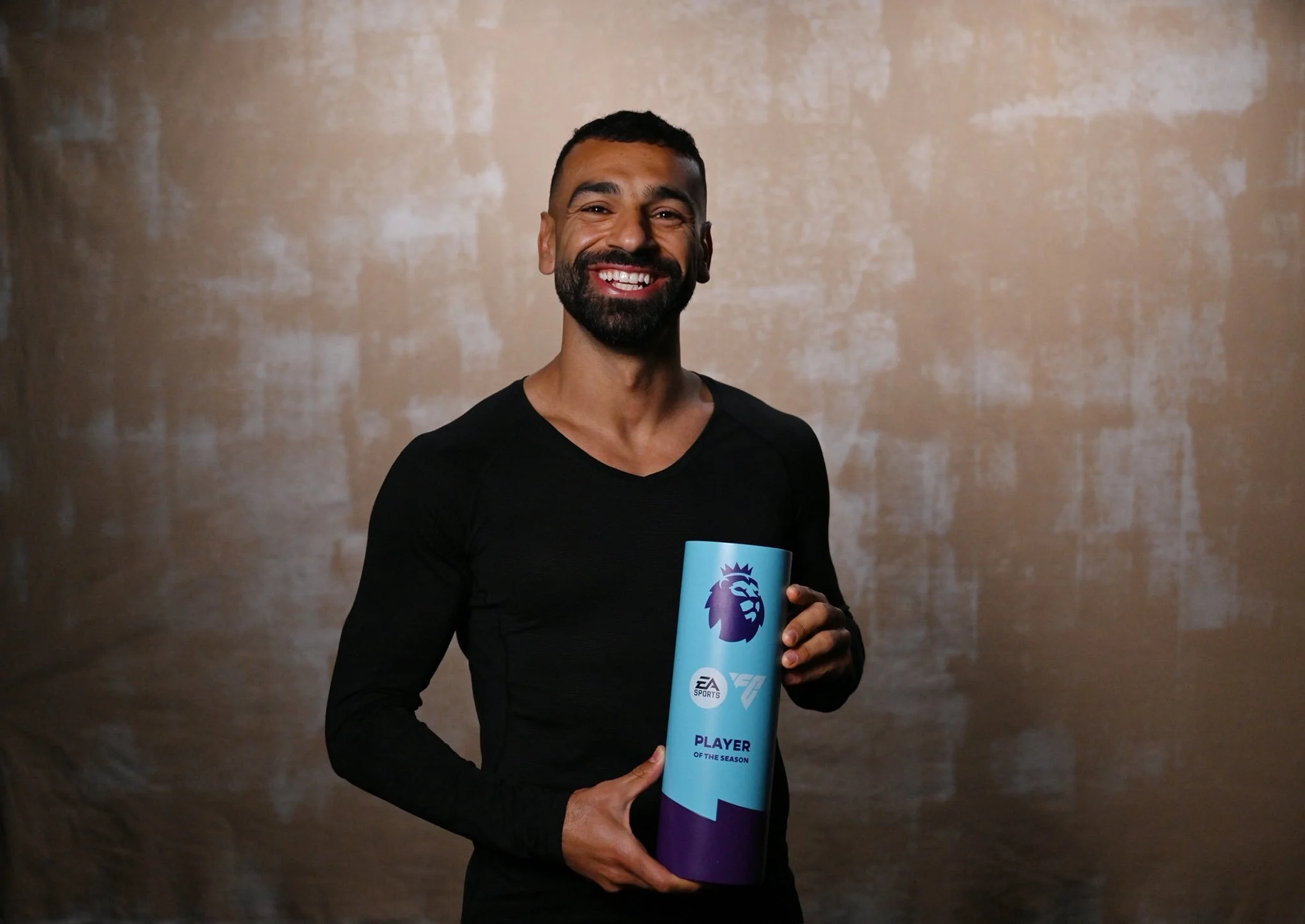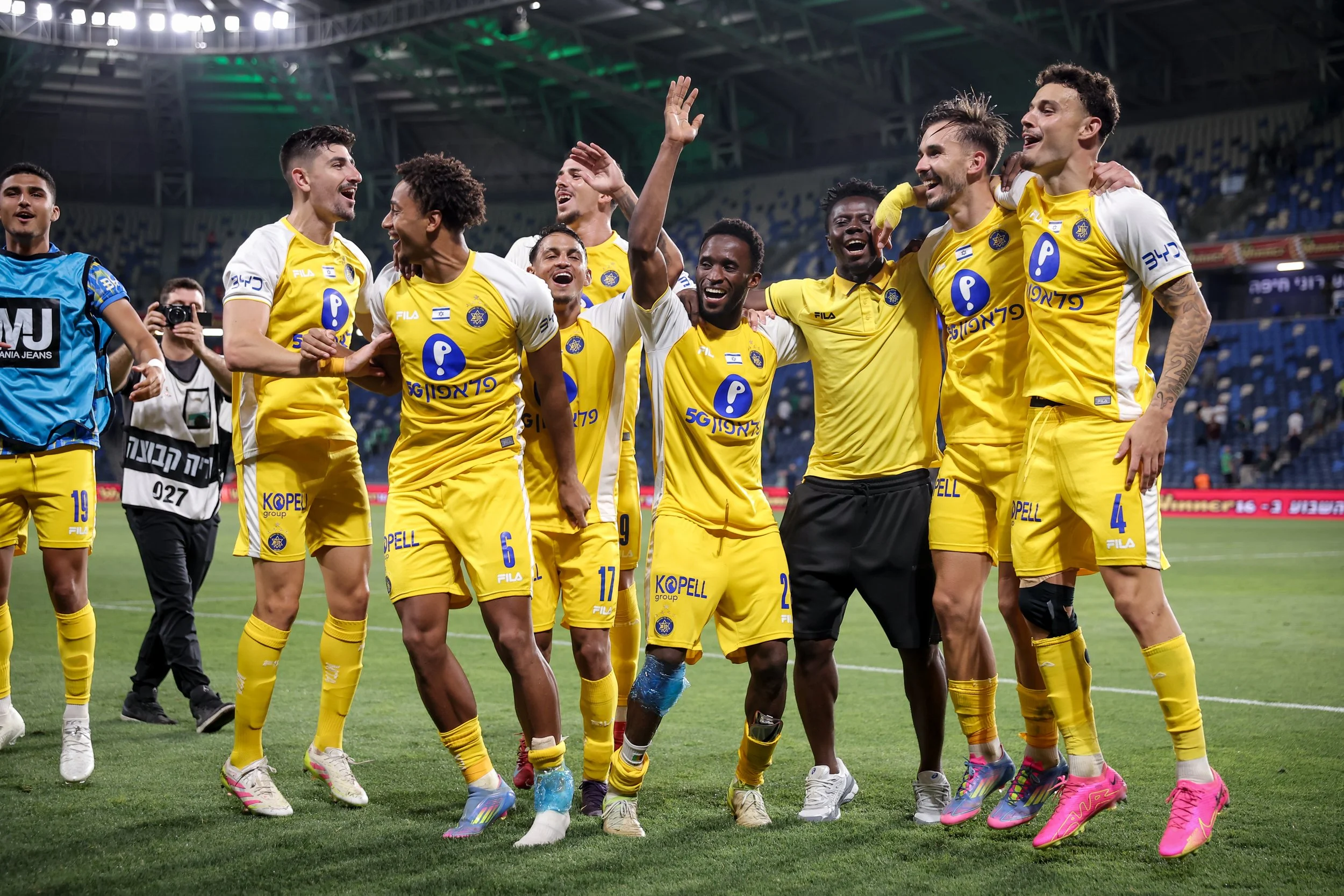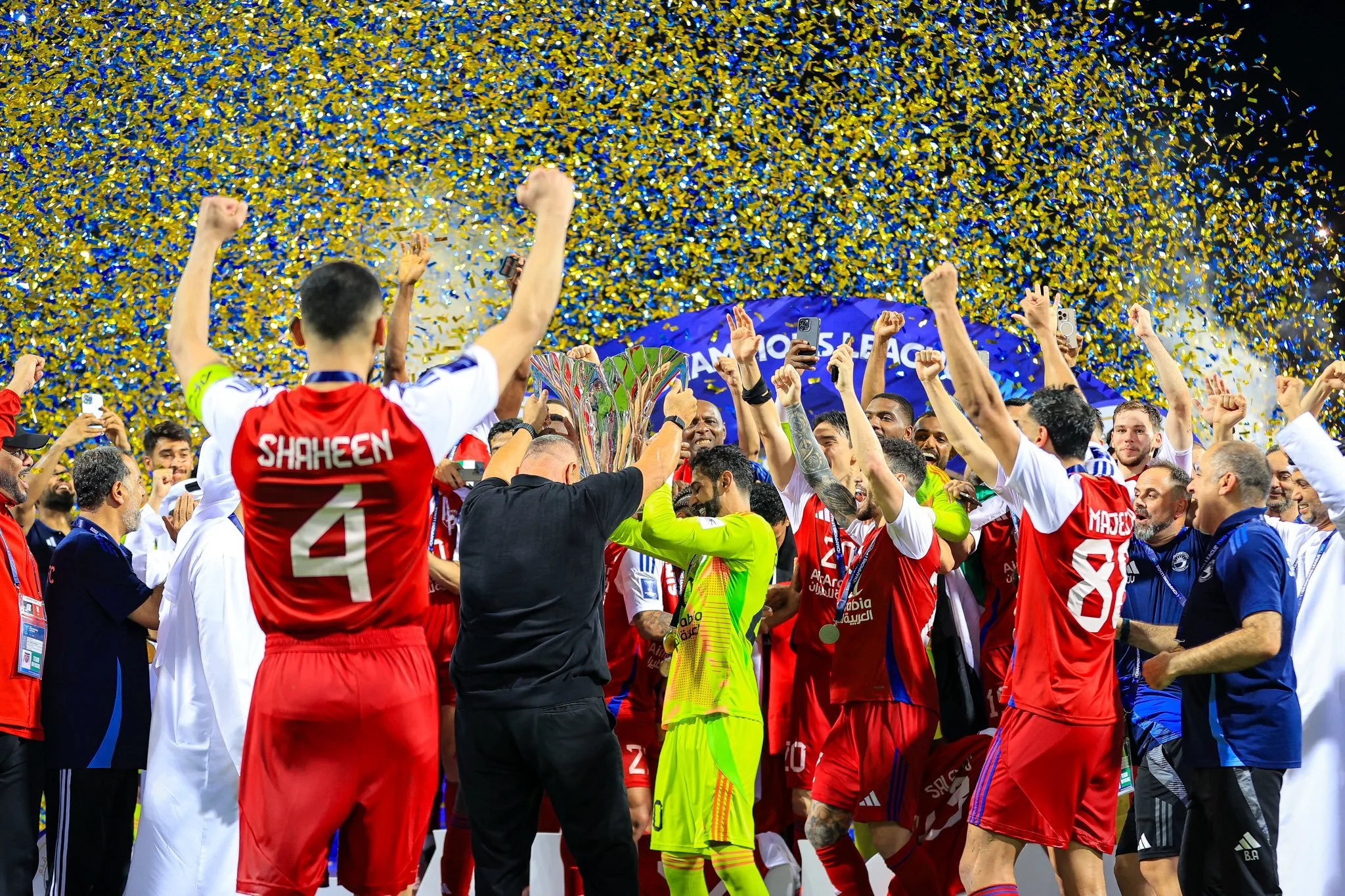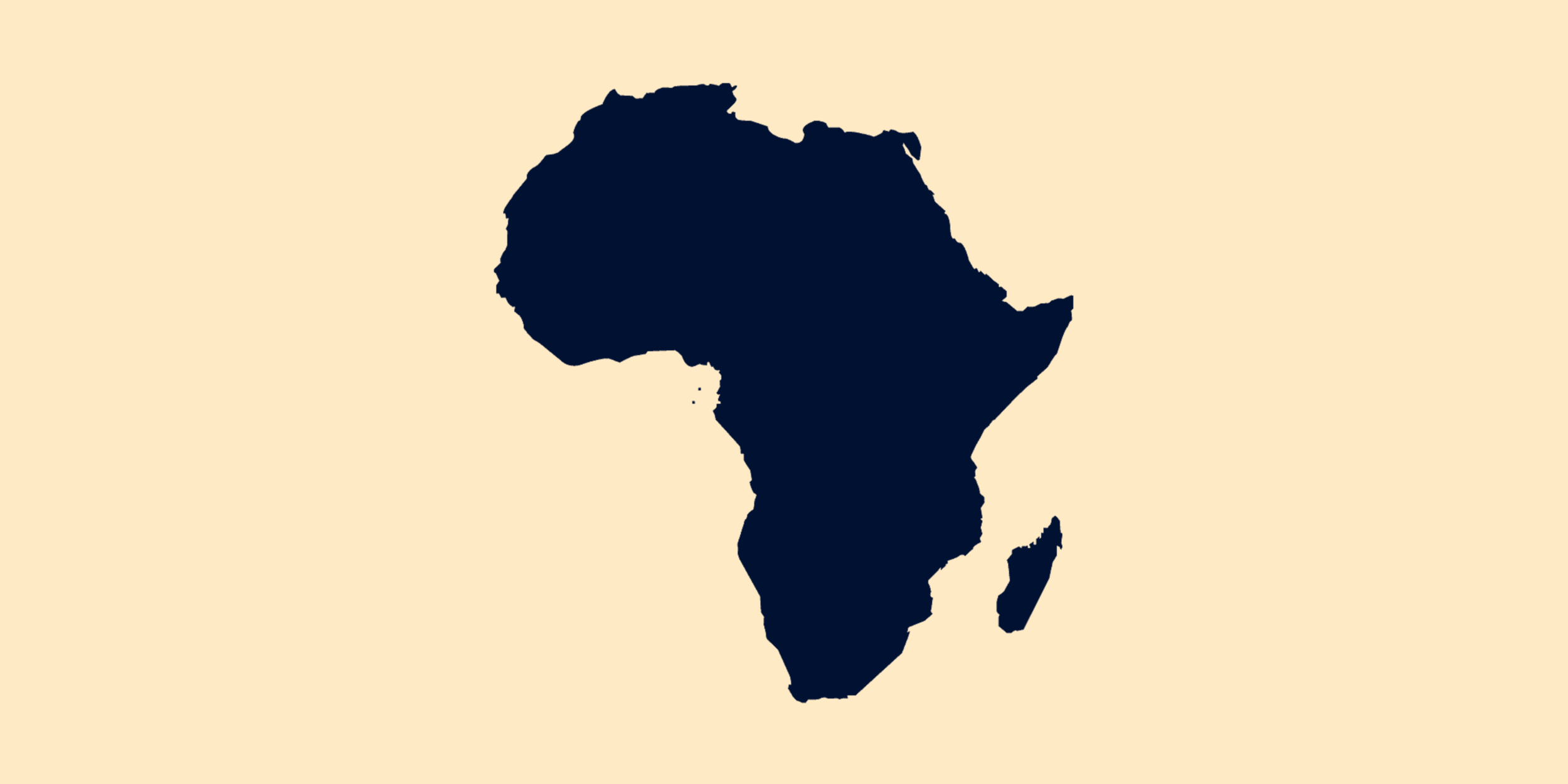After a stormy summer featuring an impressive spending spree, including signing some of the biggest names in world football, the new Saudi Pro League (SPL) season got underway this weekend.
On Friday night, Al Ahli hosted Al Hazem in their official return to the Saudi top flight, after a historic first season in the second division last term.
The new-look Al Ahli gave their passionate fans a remarkable performance, punctuated by big name stars Allan Saint-Maximin, Riyad Mahrez, and Roberto Firmino.
Firmino scored a hat-trick in a 3-1 victory.
But the real stars were Al Ahli's fans, who put on an impressive display before the game, featuring tifos, pyrotechnics and fireworks.
On this opening weekend, the world got a taste of why Saudi Arabia is not another China or the USA when it comes to football.
Here in the Middle East, there are clubs with history, community and real fans passionate about the game.
But who are these clubs, and what do they stand for?
In Saudi Arabia, the clubs are multisport institutions with solid local identities, communities and rivalries that go way back to the first part of the 20th century.
The start of this season in particular is an excellent opportunity for an introduction to the clubs, the new faces, the local players, and more.
Al Hilal
Al-Hilal Riyadh is the team of the Saudi nation.
Founded in 1957, it has won the most local championships (18), holds the record for the most triumphs in the AFC Champions League (4), and is the most prominent club in both Saudi Arabia and Asia.
As such, it has close ties to the Saudi royal family, the Salman family.
This summer, a number of big names arrived on the teams books, including Kalidou Koulibaly, Malcolm, Ruben Neves and Sergey Milinkovic-Savic, to add to a squad that already boasted almost the whole Saudi national team from the last World Cup.
The team is guided by Jorge Jesus, who is in his second tenure at the club, and has high expectations to keep Al-Hilal at the top of Saudi football.
On Tuesday evening, after a quick negotiation, Neymar Jr. joined Al Hilal Riyadh in a contract worth more than $300m for two years. His presentation video included female fans, players and young kids in the streets of Riyadh. The growing community of football's biggest names in the Middle East is expanding, as the cultural impact within Saudi Arabia. According to sources close to the PIF and managing the project, it is just the very beginning.
Al Nassr
Its city rival, Al-Nassr Riyadh, is also one of the most popular clubs in the country.
Established two years earlier than Al Hilal, in 1955, Al Nassr was an essential local football and sports organisation in Saudi Arabia.
It gained significant recognition too when Cristiano Ronaldo joined the club's ranks at the end of 2022.
Despite being less decorated than their rivals, Ronaldo’s arrival encouraged many other top names to join Riyadh's yellow side.
Marcelo Brozovic, Secko Fofana, Alex Telles, and Sadio Mané, are among the additions.
Managed by Luis Castro, who joined from Botafogo, Al-Nassr is considered one of the favourites for the title this season.
Al Ittihad
The third team you must know is Al-Ittihad Jeddah, the reigning champion of Saudi Arabia, a grassroots club in the country, and arguably the most popular.
Founded in 1927, Al-Ittihad has fans throughout the Middle East and similarly had a strong summer transfer window.
Players like Karim Benzema, N'Golo Kante, Fabinho, Joao Cancelo, and Moussa Dembele joined the team.
Led by Nuno Espirito Santo, Al-Ittihad appears to be one of Saudi football's strongest teams.
Al Ahli Jeddah
The urban rival of Al-Ittihad, they established in the same city a decade later, have had a significant role in the summer transfer window.
Al Ahli's return to the top flight is crucial for Jeddah as a city, and the league as a whole.
Al Ahli's fans are one of the top fan bases in the region, and their presence is an asset to the league, as the season opener against Al Hazem showed perfectly.
With Mahrez, Saint-Maximin, Firmino and Edouard Mendy, their transfer market activity is considered the best, and the most successful among the league’s top four clubs.
But lurking in the shadows appears to be an issue that has been bubbling for some time - the club are yet to pay six months salary to coach Pitso Mosimane and his staff, who helped guide the team back to the SPL.
It’s not just the big four that you should be thinking about however, there are more exciting teams with history, fans, and intriguing signings.
Al-Ettifaq has signed Steven Gerrard as their head coach, along with Jordan Henderson from Liverpool, and Jack Hendry and Moussa Dembélé from Celtic.
Al-Fateh has coach Slaven Bilić, Damac has Cosmin Contra and, of course, Al-Shabab Riyadh, are led successfully by former Argentina playmaker Ever Banega.
Less room for Middle Eastern stars
But alongside the addition of big names and coaches with top reputations, there is also a darker side to the footballing part of this story.
For years, the Saudi Pro League was considered the Premier League of the Arab world, and the best talents from all over the region would typically arrive there.
Now, that is changing.
The bar has been raised, and the need to develop local players has disappeared.
We will now see fewer Syrians, Iraqis, Kuwaitis, and Omanis making their way to Saudi Arabia, and instead they’ll likely play in Qatar or the United Arab Emirates.
An excellent example is Syria’s Omar Al-Somah, who has consistently been the league's top scorer throughout the past decade, but recently left for Al-Arabi in Qatar this summer.
King Salman Club Cup as a cultural impact stage
Throughout the last two weeks, the King Salman Cup has been played in Saudi Arabia, the traditional Arab club tournament, and a concentrated version of the Arab Champions League.
It was the local audience's first taste of the big stars that had come to Saudi Arabia, but more than that, it showed the power of the Saudi project in the Arab world as well.
Zamalek from Egypt, Raja and Wydad Casablanca from Morocco, Al-Shorta from Iraq, Al-Ahli Tripoli from Libya and the big teams from Tunisia, got to play against the Saudi teams and players that, until now, most had only seen on television.
There is a statement here from the Saudis.
Their direct entry into the game will influence the growing relationship between the Arab world and football.
That means that even the less affluent parts of this world will benefit from Cristiano Ronaldo, Mane, Mahrez and co arriving in their neighbourhood.
It’s inspired children and young players from across the region, who can now see some of the world's best playing competitively against their local teams and players.
It also strengthens Saudi Arabia in the regional power structure as a cultural force, and the Saudi Pro League will become the most-watched league in the region in a heartbeat, alongside a brand new deal with BeIN Sports.
This year, SPL officials expect to produce similar viewing figures as the German Bundesliga and La Liga, sitting just behind the Premier League and the Champions League in regional terms.
The King Salman Club Cup’s final last Saturday was a fiery Riyadh derby between Al-Hilal and Al-Nassr, a classic Arab football clash.
With all the big stars on the field, Al-Hilal took the lead first with an impressive goal from Michael, after a cross from Malcom.
Al-Nassr lost Abdelela Al-Amri to a red card, but that didn't stop them from equalising with a fantastic goal from Cristiano Ronaldo, assisted by Sultan Al-Ghannam.
The game went into extra time, where Ronaldo scored his second after a crazy attack, and won his side the tournament for the first time.
The resulting celebrations erupted into a mini brawl between players from the two teams on the pitch.
Big stars or not, the Riyadh derby is a fierce rivalry in the Arab world.
The arrival of international stars in Saudi Arabia allows the world to taste the flavour of Arab football in its full glory.
It combines emotions, temperament, excitement, and drama, offering a unique experience for fans and players alike, and we’re only at the very beginning of it.
Edited by Alex Smith



